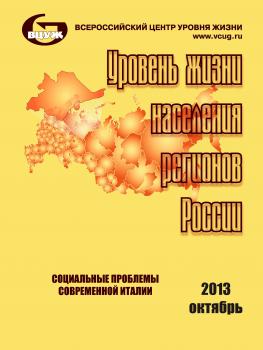Relevance. The article is based on the author’s social survey investigation data obtained in 2010-2011. It reveals which components of human capital characterizing innovative potential of the worker bring him(her) an additional reward in the regional labour market, and which of them are undervalued; what are the differences in such additional reward of men and women and the possible reasons of these differences. The results indicate that the differences in the different cases can be in favour of not only men but also women. Object of the Research: Enterprises of the Nizhniy Novgorod Region. Subject of the Research: Relationship between the wages of male and female employees in the region, and innovative components of their human capital. Theoretical aspect of the Subject: Concept and essence of innovative components of human capital and gender inequality in income. The practical aspect of the subject: differences in wages of corporate employees in the Nizhniy Novgorod region depending on the performance of three components of their human capital classified as innovative. Purpose of the Research Investigating the differences between men and women in reward that Russian labor market gives to innovative components of their human capital and identifying the possible reasons of these differences. Main Theoretical and Empirical concepts: Human capital of an employee (micro level) and organizations (meso level) contains the components that can be defined as innovative. Some of them bring additional income to the owners and thus their development and use is stimulated by the labour market, the others are not evaluated and rewarded properly. Stimulating innovative components of human capital by the labor market has the distinction among male and female workers. The examples studied have shown that on average women have these qualities have much less and their wages are lower, but the presence of such components on average brings more additional income to women than to men.
human capital, an innovative component, qualification, mobility, wages, stimulation.
1. Введение
Накопленный страной человеческий капитал составляет основу современной экономики, это главный фактор социально-экономического развития на макро- и микроуровне. Развитие передовых стран привело к формированию в ХХ в. постиндустриальной, а затем и новой экономики — экономики знаний, инноваций, глобальных информационных систем, экономики интеллектуального труда, науки, новейших технологий [Корчагин, 2005, 1, с. 114]. В современных условиях человеческий капитал является главной ценностью общества и главным фактором экономического роста, экономического прогресса, «гораздо более важным, чем природные ресурсы или накопление богатства... Именно человеческий капитал… является краеугольным камнем конкурентоспособности, экономического роста и эффективности» [Грейсон, 1991, 2, с.196]. В связи с этим необходимо, чтобы в экономике имелись достаточные стимулы для развития человеческого капитала как для организаций, так и для работников на индивидуальном уровне. При этом, поскольку у мужчин и женщин в значительной степени различаются жизненные стратегии, предпочтения при выборе рода и режима занятости и возможности трудовой деятельности, важной проблемой для изучения являются гендерные различия в использовании и вознаграждении человеческого капитала. Целью данной работы является изучение различий в вознаграждении российским рынком труда инновационных компонент человеческого капитала мужчин и женщин и выявление их возможных причин.
1. Korchagin U.А. Rossijskij chelovecheskij kapital: faktor razvitiya ili degradatsii? [Russian human capital factor of development or degradation?]. Voronezh, TSIREH Publ., 2005. 252 p.
2. Grejson Dzh. K., Odell K. Аmerikanskij menedzhment na poroge 21 veka [American management on the threshold of the 21st century]. Moscow, Ekonomika Publ., 1991, 319 p.
3. Roshhin S.U., Gorelkina O.А. Gendernye razlichiya v zarabotnoj plate: mikroehkonomicheskij analiz faktorov i tendentsij [Gender differences in wages: a microeconomic analysis of the factors and trends]. Gendernoe neravenstvo v sovremennoj Rossii skvoz´ prizmu statistiki [Gender inequality in contemporary Russia through the prism of statistics]. Mocow, Editorial URSS Publ., 2004.
4. Zarabotnaya plata v Rossii. EHvolyutsiya i differentsiatsiya [Wages in Russia. The evolution and differentiation]. Moscow, VSHEH, 2008. 575 p.
5. Mal´tseva I.O. Gendernye razlichiya v professional´noj mobil´nosti i segregatsiya na rynke truda: opyt rossijskoj ehkonomiki [Gender differences in occupational mobility and segregation in the labor market: the experience of the Russian economy]. Moscow, EERC Publ., 2005. 55 p.
6. Troitskaya А.А. Ponyatie, klassifikatsiya i rol´ innovatsionnykh komponent chelovecheskogo kapitala [The concept, classification and the role of innovative component of human capital]. Ural´skij nauchnyj vestnik [Ural Scientific Gazette]. 2014, I. 14 (93), pp.39-43.
7. Kapelyushnikov R.I., Luk´yanova А.L. Transformatsiya chelovecheskogo kapitala v rossijskom obshhestve [The transformation of human capital in the Russian society]. Moscow, HSE Publ., 2009.
8. Soboleva I.V. Paradoksy izmereniya chelovecheskogo kapitala [Paradoxes of measuring human capital. Scientific report]. Moscow, Institut ehkonomiki RАN Publ., 2009. 50 p.
9. Bovenberg A.L. The Life-course perspective and social policies: An overview of the issues. CESifo Economic Studies. 2008. Vol. 54. № 4.
10. Handel M. J. Skills mismatch in the labor market. Annual Review of Sociology. 2003. № 29.
11. Genkin B.M. EHkonomika i sotsiologiya truda [Economics and sociology of labor studies. for high schools]. Moscow, Norma Publ., 2007. -448 p.
12. Troitskaya А. А. Stimulirovanie rynkom truda innovatsionnykh komponent chelovecheskogo kapitala [Stimulating labor market innovative component of human capital]. Uroven´ zhizni naseleniya regionov Rossii [The standard of living of the population of regions of Russia]. 2013, I. 10, pp. 71-79.
13. Chelovecheskij kapital: soderzhanie i vidy, otsenka i stimulirovanie [Human capital: the content and types, evaluation and promotion]. Moscow, Mashinostroenie-1 Publ., Orel, OrelGTU Publ., 2005. 513 p.
14. Predprinimatel´skij klimat v Rossii: indeks OPORY-2012 [Business climate in Russia: the index SUPPORTS 2012]. Moscow, Obshherossijskaya obshhestvennaya organizatsiya malogo i srednego predprinimatel´stva «OPORА ROSSII» Publ., 2012.
15. Martsinkevich V.I., Soboleva I.V. Ekonomika cheloveka [Economy rights]. Moscow, Аspekt Press Publ., 1995.





